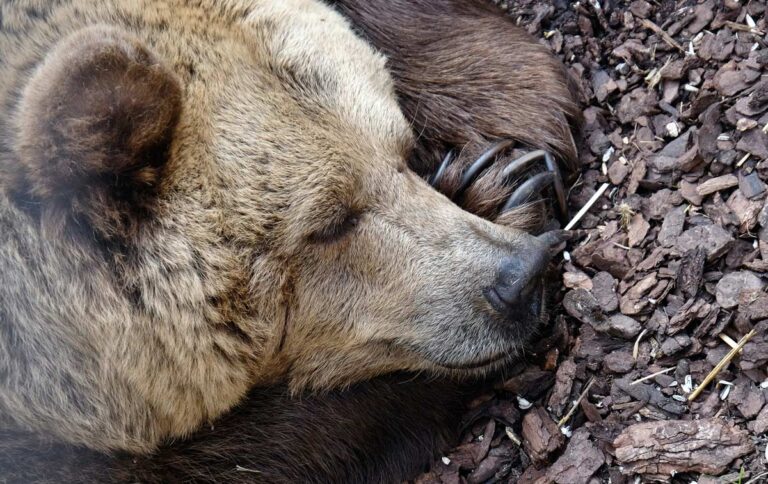What is torpor and how exactly does it differ from hibernation and aestivation?
When speaking about certain animals and the way they get through the cold months of winter, many of us are quick to speak of hibernation—the condition or period of an animal or plant spending the winter in a “dormant state.” But what we fail to realise is that in reality, not that many animals truly hibernate. Instead, most of them enter a lighter state of sleep known as torpor while a few others utilise a similar strategy called aestivation in the summer months. So what is the difference between hibernation, torpor, and aestivation?
What is hibernation?
“Hibernation is a voluntary state that an animal enters into in order to conserve energy, survive when food is scarce, and minimize their need to face the elements in the cold winter months,” writes Treehugger. Most people usually compare it to a really deep sleep, although hibernating is much more profound than simply sleeping. Depending on the species—from butterflies to bats—it can vary from long, deep unconsciousness to light spells of inactivity.
In cases where the animal is in a state of deep unconsciousness, hibernation can be risky as the dormant animal is vulnerable to predators and the unpredictable climate. Animals may die during hibernation from lack of fat, severe weather or even premature awakening.
How does hibernation work?
A hibernating animal’s metabolism slows and its temperature plunges—in ground squirrels it can fall to -2°C. Breathing slows and, in bats, the heart rate can fall from 400 to 11 beats per minute. Some cold-blooded animals, such as wood frogs, produce natural antifreezes to survive being frozen solid.
Which animals hibernate?
Small mammals, such as chipmunks, dormice, hamsters, hedgehogs and bats. Also, many insects, amphibians and reptiles. “Just one bird is known to be a true hibernator: North America’s common poorwill,” writes Discover Wildlife. “This beautifully camouflaged nocturnal bird is a relative of the nightjar found in Britain, and in winter often hibernates among rocks. It can slash its oxygen intake by 90%, while its body temperature plummets to 5°C, barely registering signs of life.”
To prepare for their hibernation, mammals feed heavily in summer and autumn, storing fat to see them through the winter.
What is torpor?
Torpor is a brief bout of suspended animation, usually lasting less than a day, when an animal’s breathing, heartbeat, body temperature and metabolism are reduced. By doing so, it enables animals to survive periods of reduced food availability. But unlike hibernation, torpor appears to be an involuntary state that an animal enters into as the conditions dictate.
How does torpor work?
During their active period of the day, animals maintain a normal body temperature and physiological rates. But while they are inactive, usually at night, they enter into a deeper sleep that allows them to conserve energy and survive the winter.
‘Waking up’ from torpor takes around one hour and involves violent shaking and muscle contractions. It takes some energy, but this loss is offset by how much energy is saved during the torpid state. One of the main problems with torpor is that the animals are too sluggish to react to predators. Furthermore, if the cold spell is unusually long, the animal may die if its body temperature drops too low.
Which animals enter torpor?
Birds such as hummingbirds and frogmouths, or small mammals such as bats, can go into torpor every day.
What is aestivation?
Aestivation—also called estivation in the US—is another strategy used by animals to survive extreme temperatures and weather conditions. But unlike hibernation and torpor, which are used to survive shortened days and colder temperatures, estivation is used by some animals to survive the hottest and driest months of summer.
How does aestivation work?
Most animals bury themselves in the ground, which protects them from the heat. Here, they wait for the wet season or cooler temperatures. Some land snails climb trees to escape the heat of the ground, sealing themselves into their shells using dried mucus. Similar to hibernation and torpor, aestivation is characterised by a period of inactivity and a lowered metabolic rate.
Which animals aestivate?
Many animals, both invertebrates and vertebrates, use this tactic to stay cool and prevent desiccation when the temperatures are high and water levels are low. Animals that estivate include molluscs, crabs, crocodiles, some salamanders, mosquitos, desert tortoises, the dwarf lemur, and some hedgehogs.
Sadly, large numbers of aestivating animals perish in periods of prolonged drought.






